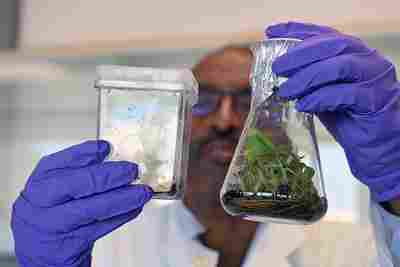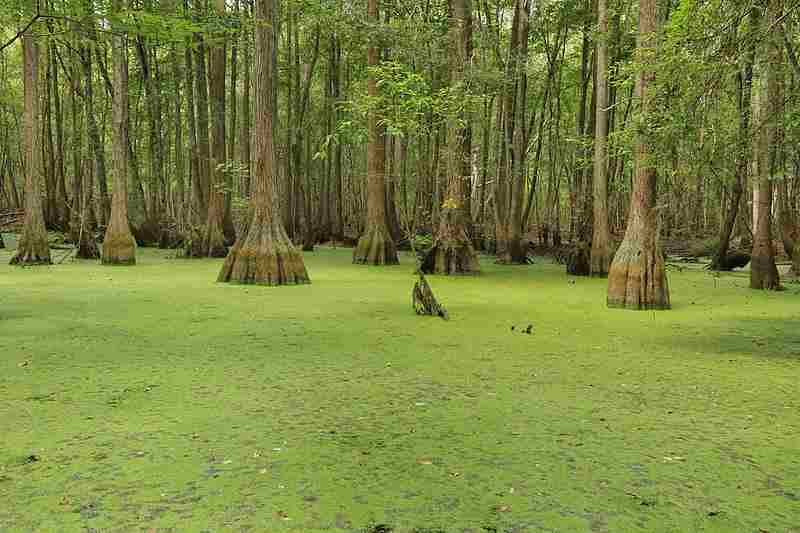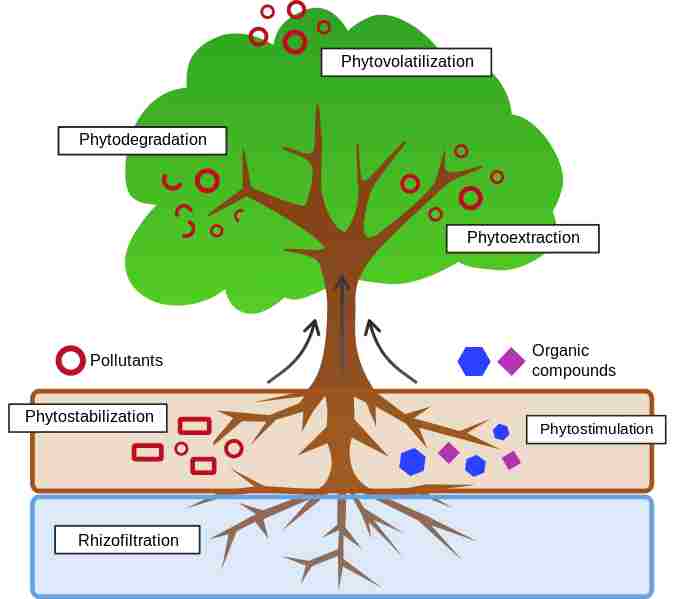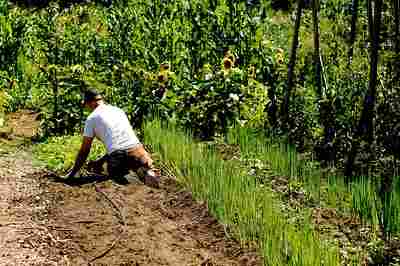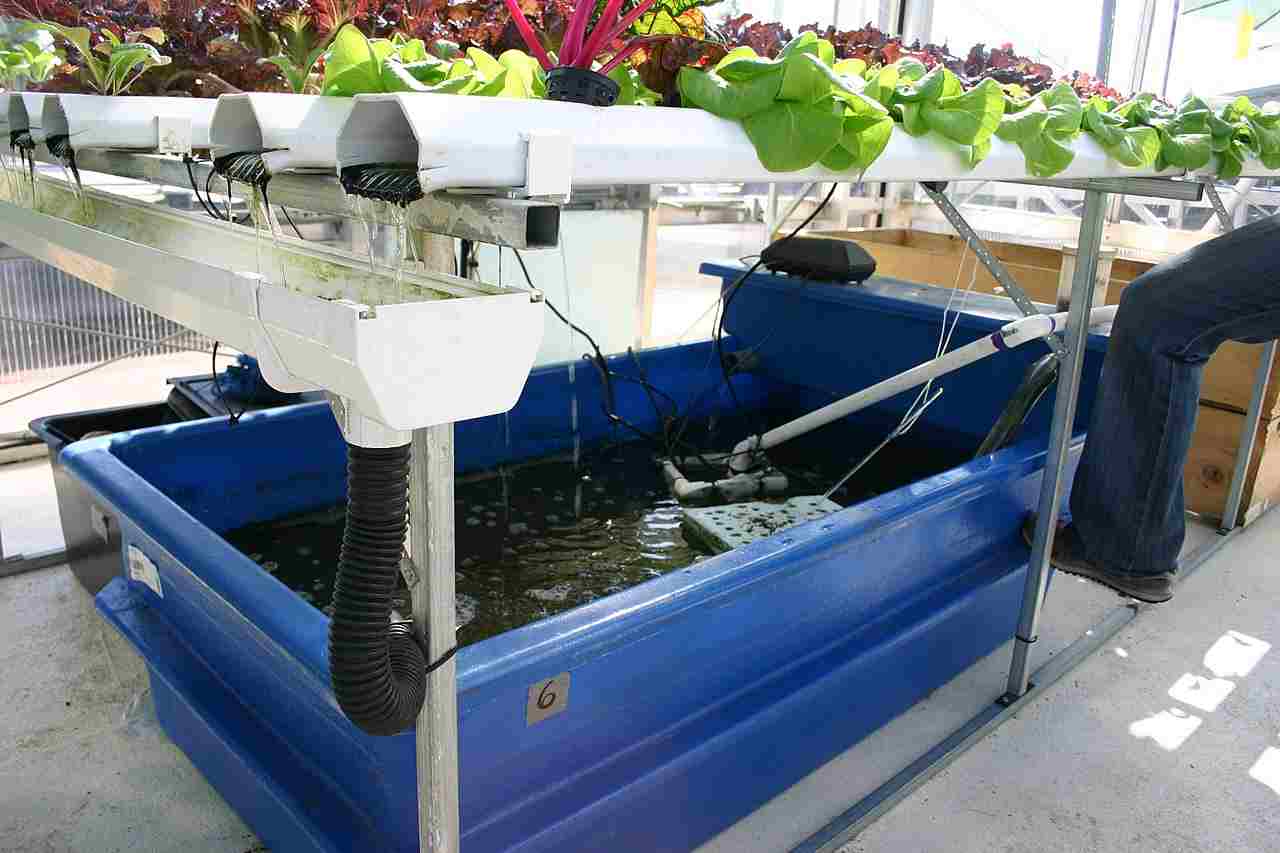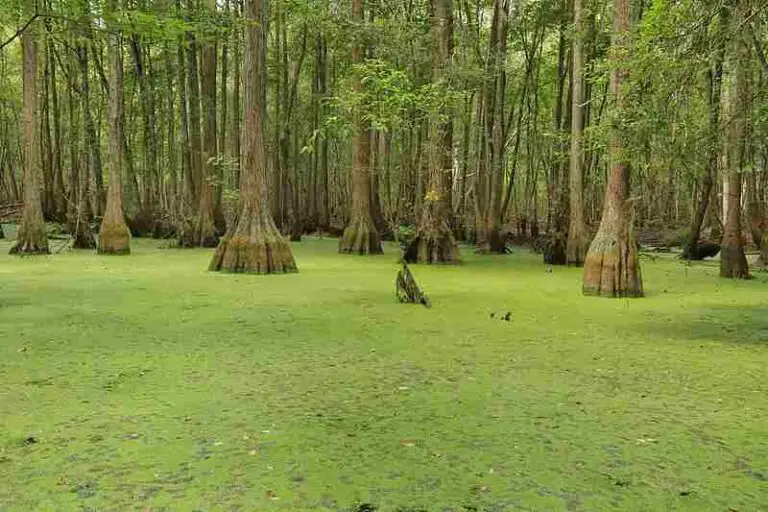13+ Phytoremediation Advantages Discussed
Phytoremediation advantages are; eco-friendly approach, economic feasibility, minimal energy requirement, ease of integration with other techniques, usability for multiple pollutants/sites, low maintenance and monitoring, suitability for agricultural soil restoration, less need of heavy equipment, minimal technical expertise requirement, combination with reforestation/afforestation, multi-choice plant species, continuous improvement, microbial stimulation, and insight into bioaccumulation mechanisms.
This article discusses the advantages of phytoremediation, as follows;
1). Eco-Friendly Materials and Methods (as one of the Phytoremediation Advantages)
Phytoremediation is a fantastic and eco-friendly way to clean up polluted places in nature. It uses fast-growing plants to remove or neutralize harmful substances in the soil or water. Here it is shown, how this eco-friendly method makes phytoremediation so great for fixing damaged areas.
Ways in Which the Eco-Friendly Approach of Phytoremediation is Helpful
Phytoremediation is helpful by being an eco-friendly method of environmental remediation, because it dies not utilize harmful chemicals or incur high costs.
Phytoremediation relies on the power of plants and their natural ability to absorb and break down toxins. It's like having a collection of green tools that clean up the environment.
Unlike some other clean-up methods that use chemicals, phytoremediation is gentle on the environment. It doesn't add any more harmful substances into the mix.
Phytoremediation is often cheaper than other clean-up methods. It's like getting a great deal on fixing a problem.
It helps to restore the land to health and fertility, making it useful again for things like farming. So, it's not just a quick fix; it's a long-lasting solution.
Additional Notes on the Eco-Friendliness of Phytoremediation
Phytoremediation is environmentally friendly because it uses natural processes and plants to clean up pollution without adding more harm to the environment.
Phytoremediation helps to remove or reduce contaminants in the soil and water, making the environment safer for both plants and animals. It also promotes sustainability by restoring polluted land to health, making it useful for various purposes like agriculture. Plus, it's cost-effective and doesn't rely on harmful chemicals, which is a win for the environment.
2). Economic Feasibility
Phytoremediation is not just good for the environment; it's also great for the wallet. This section discusses how its economic feasibility makes it an excellent choice for treating damaged sites.
Aspects and Facilitators of the Economic Feasibility of Phytoremediation
Phytoremediation relies on affordable materials and methods, and may also be a means of biofuel production.
Typically, phytoremediation doesn't break the bank. It's often much cheaper than other methods like digging up and disposing of contaminated soil or using high-temperature treatments.
Plants do the heavy lifting, so you don't need expensive equipment or chemicals. It's like getting the job done with Mother Nature's help.
Some plants used in phytoremediation, like perennial energy grasses, can be used as energy resources and turned into power and heat. This extra energy can be sold, making the whole process even more cost-effective.
Phytoremediation is often cheaper compared to other methods of cleaning up pollution. It's a cost-effective way to get the job done while also benefiting the environment.
3). Minimal Energy Requirement (as one of the Phytoremediation Advantages)
Phytoremediation is an ideal way to clean up pollution, in the area of its ability to conserve energy. This section discusses how it saves energy, as well as how makes it a great choice for fixing damaged places.
Energy-Conserving Components of Phytoremediation
Phytoremediation reduces energy expenditure by using plants, requiring low maintenance; and producing green energy.
Phytoremediation uses special plants that are like pollution magnets. They don't need a lot of energy to do their job. They absorb, trap, or break down harmful toxins naturally.
Once these plants are in place, they usually don't need much care. They're like low-maintenance utensils that keep functioning without using lots of energy.
Some energy crops, like Miscanthus and Salix, are used for phytoremediation. These plants can be turned into green energy later, creating a double benefit.
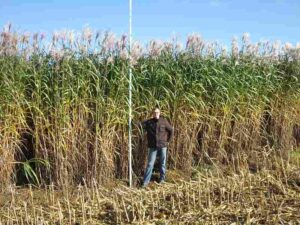
Various plants are used for phytoremediation, including Hibiscus cannibus, Lotus corniculatus, Astragalus racemosus, and Helianthus annus, depending on the type of pollutant being treated, and the severity of degradation.
4). Ease of Integration With Other Remediation Techniques
Phytoremediation can be operated like a team member with other methods to conserve the environment. It's an amazing way to clean up polluted places, because it can easily be combined with other remediation techniques.
Overview, Benefits and Examples of the Combined Implementation of Phytoremediation
Phytoremediation can team up with other techniques to make the cleanup even better.
Depending on the pollution problem, you can use different techniques with phytoremediation. For example, if the soil is contaminated with heavy metals, you can use phytostabilization or phytoextraction along with oxidation and soil vapor extraction.
When these techniques work together, they can clean up polluted areas faster and more effectively. It can be a very effective approach when dealing with severe degradation and/or persistent pollutants.
Examples of techniques that can be combined with phytoremediation are thermal desorption, soil vapor extraction, pump and treat, oxidation, and excavation. These techniques focus on different aspects of pollution, making the cleanup more powerful.
The components of phytoremediation include tools like plants and fertilizers; and techniques like rhizofiltration, phytostabilization, phytovolatilization, and phytoextraction, whose selection depends on the specific pollution problem being addressed.
5). Usability for Multiple Pollutants and Site Conditions (as one of the Phytoremediation Advantages)
Phytoremediation is like a multi-purpose approach that can clean up various kinds of pollutants from the environment. This section sheds light on how it works.
The Multipurpose Attribute of Phytoremediation
Phytoremediation can handle lots of different pollutants, like metals, pesticides, oil, and even explosives. This makes it a viable option for different cases of environment degradation.
It implies that phytoremediation can work in different conditions. Whether the pollution is in the soil or water, phytoremediation can come to the rescue.
Plants and their associated microbes in the soil team up to fight pollution. They take in the toxic materials and make them less harmful. This can partly explain the versatility of phytoremediation.
A broad range of pollutants can be removed by phytoremediation, including metals, pesticides, solvents, radioactive waste, crude oil, and its derivatives.
Phytoremediation of organic pollutants involves using plants and their associated soil microbes to reduce the concentration and harmful effects of these pollutants in the environment. It is a natural way to clean up chemicals like pesticides and hydrocarbons using the power of plants, and is often combined with other treatment approaches in oil spill cleanups.

6). Low Maintenance and Monitoring Requirements
Phytoremediation is like having a garden that cleans up pollution, and it is relatively easy to take care of.
Generally, phytoremediation is like a low-budget alternative to mechanized methods of environmental restoration. It uses sunlight to work, so it is simple to manage, and you don't need lots of expensive equipment. That means it's not costly to set up or maintain.
As earlier stated, phytoremediation is an eco-friendly form of pollution cleanup. It is gentle on nature and doesn't add more chemicals to the environment. This means there is no additional environmental impact that could require monitoring and mitigation.
Phytoremediation depends on plants that can take care of themselves. Once you cultivate the special cleanup plants, they don't need constant attention. It differs from other techniques that involve chemicals and complex equipment.
7). Suitability for Agricultural Soil Restoration (as one of the Phytoremediation Advantages)
Phytoremediation is like an effective natural cleanup option for sensitive sites, including farmlands. This section discusses the suitability and application of phytoremediation in agriculture.
Overview of Phytoremediation in Agricultural Soil Treatment
Agricultural soil restoration stands to benefit from the organic approach of phytoremediation.
Phytoremediation uses plants to clean up soil. These plants function like natural vacuum cleaners for pollution. They can take away harmful materials from the soil.
It's not just for polluted places; it's also great for farms. When farmland gets dirty from things like heavy metals, phytoremediation plants can help make it clean and safe for growing crops.
Phytoremediation doesn't need expensive gadgets. It's a simple and cost-effective way to make soil better.
Additional Notes
The process of phytoremediation in soil is made up of three main steps including; plant growth, toxin extraction, and bioaccumulation.
Phytoremediation is all about using special plants to take pollutants out of the soil. These plants have roots that can absorb harmful stuff from the ground, making the soil cleaner and safer.
Phytoremediation can help get rid of all sorts of pollutants like heavy metals, pesticides, hydrocarbons, and more.
8). Less Need of Heavy Equipment
Phytoremediation is a plant-powered cleanup process that doesn't need big machines.
It uses plants to clean up the environment. There is no need for heavy machinery because plants do all the hard work through natural growth and uptake mechanisms. .
The plants used in phytoremediation are usually versatile in their bioaccumulation capability. They can handle different types of pollutants and thrive in different climates. They grow deep roots to extract these pollutants out of the ground.
Phytoremediation has a simple plan: let the plants do their thing. It's a low-tech, high-effectiveness solution for cleaning up polluted areas.
Additional Notes on the Requirements and Innovations of Phytoremediation
What is needed for phytoremediation, is special plants that can tolerate polluted soil and/or water, grow well in the area's climate, and have deep roots to reach the contaminants. It also needs time, as plants gradually clean up the soil.
Phytoremediation can occur in different ways, like phytostabilization (keeping pollutants in place), phytoextraction (plants absorbing pollutants), phytovolatilization (plants releasing pollutants into the air), and rhizofiltration (plants cleaning water through their roots). These innovative mechanisms make phytoremediation adaptable to various types of pollution.
9). Minimal Technical Expertise Needed (as one of the Phytoremediation Advantages)
Phytoremediation is mainly dependent on biotic factors and processes, and you don't need to be a tech genius to use it.
Phytoremediation is all about using plants and the tiny helpers in the soil to make pollution less harmful. No complex machines or technical implementations are needed.
You don't have to be a science whiz to get how phytoremediation works. It's about planting the right species of bioaccumulator plants, and letting them do their thing, like cleaning up the environment.
For this reason, phytoremediation doesn't break the bank. It's a budget-friendly way to make the environment healthier and more productive.
Additional Note
Phytoremediation falls under the field of environmental science and bioremediation. It's a way to clean up the environment using plants and natural processes, without needing a lot of technical expertise.
10). Ability to Combine With Reforestation and/or Afforestation
Phytoremediation can combine with reforestation and afforestation to save the environment, especially when it is used in the restoration of degraded forests or other plant-dominated ecosystems like grasslands.
The Combined Benefit of Phytoremediation and Forestation
Phytoremediation is a green method that uses plants to clean up pollution. These plants can double as tools for reforestation and afforestation in some cases, so that the restoration process becomes even more productive.
Reforestation means bringing back lost forests, while afforestation means creating new ones by planting lots of trees. Trees are useful as carbon sinks and tools for extracting or intercepting pollutants. They clean the air and fight climate change by storing carbon dioxide.
Phytoremediation helps clean up polluted soil, and when combined with reforestation or afforestation, it's like a double win. We not only clean up the mess but also make the Earth greener and healthier.
The best part is, this two-fold approach doesn't require fancy gadgets or expensive tools. It's a cost-effective way to heal our environment.
In addition, it fights desertification and helps manage water resources. It's like a one-stop solution for many environmental challenges.
Innovative phytoremediation methods within this context include using special plants, soil improvements, and even genetic tricks to make plants better at cleaning up pollution. These innovations help phytoremediation work even more effectively.
11). A Variety of Plant Species Can be Used (as one of the Phytoremediation Advantages)
One of the significant advantages of phytoremediation is its versatility in plant selection.
A wide variety of plants can be used in phytoremediation, allowing for adaptability to different environmental conditions and contaminants. This adaptability is helpful in addressing diverse pollution scenarios. Here some types of plants that can be used in phytoremediation are highlighted.
Plants (and Other Organisms) that Facilitate Phytoremediation
Plants that can be used in phytoremediation include various hyperaccumulators, terrestrial grasses, trees, legumes, aquatic plants, ferns, and wildflowers.
Hyperaccumulators are plants that are exceptionally efficient at absorbing and accumulating heavy metals and other contaminants. Examples include Thlaspi caerulescens (alpine pennycress) for cadmium and Indian mustard for lead and selenium.
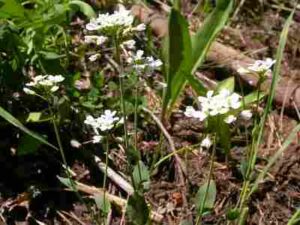
Grass species such as switchgrass and vetiver grass are known for their deep root systems, which make them effective in stabilizing soil and absorbing contaminants.
Various tree species, including willow trees (Salix spp.), poplar trees (Populus spp.), and eucalyptus, are used for phytoremediation due to their extensive root networks and fast growth.
Aquatic plants like water hyacinth (Eichhornia crassipes) and duckweed (Lemnaceae) are aquatic plants known for their ability to absorb excess nutrients like nitrogen and phosphorus from water bodies.
Leguminous plants like clover and alfalfa have nitrogen-fixing properties, which can enhance soil quality and reduce the need for chemical fertilizers.
Terrestrial angiosperms like sunflowers (Helianthus annuus) are effective at removing heavy metals and have been used in phytoremediation projects. Native wildflowers can be used for phytoremediation projects, especially in restoring contaminated natural habitats.
Some fern species, such as the brake fern (Pteris vittata), are known hyperaccumulators of arsenic and have been employed in arsenic-contaminated soil cleanup.
Microorganisms like mycorrhizal fungi and certain bacteria are also involved in phytoremediation because they form symbiotic relationships with plants and enhancing nutrient and contaminant uptake.
Some conventional crops like corn, barley, and canola have been genetically modified to enhance their phytoremediation capabilities for specific contaminants.
The ability to select from this diverse range of plant species enables phytoremediation to be tailored to the specific needs of contaminated sites, so that it is a flexible and sustainable approach to environmental cleanup.
12). Phytoremediation Techniques are Continuously Improving
Phytoremediation techniques are continuously evolving and improving, offering several advantages in the field of environmental remediation.
This ongoing progress is a significant asset of phytoremediation, as it ensures that the method remains effective, efficient, and adaptable to various contamination challenges. Some key advantages of the constant improvement in phytoremediation techniques are highlighted in this section.
Benefits of Continuous Methodological Improvement in Phytoremediation
Continuous optimization increases the efficiency of phytoremediation, broadens its scope of usability, improves plant selection, supports genetic engineering, monitoring, upscaling, and integration with other techniques.
Advances in plant genetics and biotechnology have led to the development of hyperaccumulator plants, which can absorb and accumulate contaminants more effectively. These plants can remove higher concentrations of pollutants from the soil or water.
Phytoremediation techniques have expanded to address a broader range of contaminants, including heavy metals, organic pollutants, and even radioactive materials. Research has led to the identification of new plant species capable of tackling different types of pollutants.
Researchers have identified and bred plant varieties that are better suited for phytoremediation in specific environments or for specific contaminants. This allows for more precise tailoring of plant species to match the contamination problem.
Genetic modification of plants has been used to enhance their phytoremediation capabilities. Scientists have introduced genes into plants to improve their ability to absorb, transport, and accumulate contaminants.
Research has focused on optimizing the root zone (rhizosphere) of plants, where the majority of contaminant interactions occur. Techniques such as bioaugmentation with beneficial microorganisms have been developed to enhance phytoremediation efficiency.
Some studies have also explored the benefits of companion planting, where multiple plant species with complementary abilities are grown together to improve overall phytoremediation performance. This approach can create a more balanced ecosystem for pollutant removal.
Advances in monitoring technologies, including remote sensing and molecular tools, allow for real-time tracking of phytoremediation progress. This enables more accurate and timely assessments of site cleanup.
Phytoremediation has transitioned from laboratory experiments to large-scale field applications. Research has refined techniques for planting, maintaining, and harvesting plants in the field, making phytoremediation more practical and cost-effective.
Phytoremediation has expanded to encompass a range of phytotechnologies, including phytoextraction, phytostabilization, and phytovolatilization, each tailored to specific site conditions and contamination types.
Researchers have explored the integration of phytoremediation with other remediation methods, such as thermal desorption, to create synergistic approaches for more complex contamination scenarios.
These continuous improvements in phytoremediation techniques make it a dynamic and promising method for environmental cleanup. By staying at the forefront of scientific and technological advancements, phytoremediation remains a versatile and effective tool in addressing environmental pollution challenges.
13). Facilitation of Microbial Bioremediation (as one of the Phytoremediation Advantages)
Phytoremediation offers a significant benefit by promoting and facilitating microbial bioremediation in contaminated soil and water. This synergy between plants and microbes enhances the overall value and effectiveness of environmental cleanup.
In this section, the key factors highlighting this advantage are addressed.
Phytoremediation as a Stimulant for Microbe Growth and Activity
Phytoremediation can enhance microbial activity while increasing the size and diversity of microbe populations.
It is known that plant growth is accompanied by microbe growth and symbiosis, in the root zone of the plants. The root exudates released by phytoremediation plants serve as a food source for microbes, stimulating their growth and metabolic activity.
The rhizosphere of phytoremediation plants becomes a hotspot for microbial diversity. This diversity is essential for breaking down a wide range of contaminants, including organic pollutants and heavy metals, as different microorganisms specialize in the degradation of specific compounds.
Microbes thriving in the rhizosphere can directly or indirectly assist in the removal of contaminants. They may produce enzymes or metabolic products that transform or immobilize pollutants, making them less harmful or mobile.
Phytoremediation can specifically promote rhizoremediation, which is a botanical technique/process that leverages both plant roots and associated microbes. This approach is particularly effective in degrading organic contaminants like petroleum hydrocarbons, polycyclic aromatic hydrocarbons (PAHs), and chlorinated compounds.
The microbes involved in phytoremediation contribute to nutrient cycling in the soil, making essential nutrients more available for plants. This can help improve plant health and overall phytoremediation performance.
Some microbial populations that thrive in phytoremediation systems are adapted to thrive in contaminated environments, including those with high salinity, heavy metals, or low pH. These microbes can help remediate challenging sites.
The combined action of phytoremediation plants and microbes can address multiple types of contaminants simultaneously, making it a versatile and comprehensive approach to environmental cleanup.
Some Microbe Populations Thriving in Phytoremediation
Microbes that thrive in phytoremediation include species and groups like rhizobacteria, mycorrhizal fungi, dechlorinators, hydrocarbon-degrading bacteria, and metal-resistant microbes.
Rhizobacteria are a type of beneficial bacteria living in the rhizosphere, which are crucial in promoting plant growth and aiding in the breakdown of pollutants.
Mycorrhizal fungi form symbiotic relationships with plants, enhancing nutrient uptake and improving the overall health and stress tolerance of phytoremediation plants.
Some microbes, collectively known as dechlorinators, can dechlorinate toxic chlorinated compounds like polychlorinated biphenyls (PCBs) and chlorinated solvents.
Microbes such as Pseudomonas and Bacillus species are known for their ability to break down petroleum hydrocarbons and other organic pollutants.
Metal-resistant bacteria and fungi are crucial for the phytoremediation of heavy metal-contaminated sites. Examples include sulfate-reducing bacteria and metal-tolerant mycorrhizal fungi.
The close interaction between plants and microbes in phytoremediation systems creates a dynamic and efficient approach to cleaning up contaminated environments. This microbial contribution is a valuable advantage that significantly enhances the remediation potential of phytoremediation techniques.
14). Provision of Insight Into the Mechanisms of Bioaccumulation in Plants
Phytoremediation offers a valuable advantage by providing insights into the mechanisms of bioaccumulation in plants, which, in turn, can help reduce the production of toxic crops. This dual benefit contributes to a safer and more sustainable agricultural and environmental landscape. The key aspects highlighting this advantage are discussed briefly below.
Phytoremediation as a Source of Information on Bioaccumulation Mechanisms
Phytoremediation research provides a deeper understanding of how plants accumulate and tolerate various contaminants, including heavy metals and organic pollutants. This knowledge helps scientists unravel the molecular and physiological mechanisms involved in bioaccumulation.
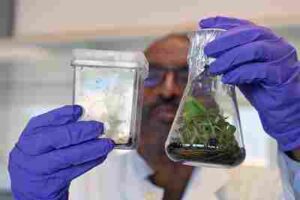
Also, phytoremediation studies have led to the identification of hyperaccumulator plants that excel at accumulating specific contaminants. These plants are capable of absorbing and storing toxins at levels far exceeding typical plant concentrations.
Insights gained from hyperaccumulator plants can inform strategies for crop improvement. Researchers can explore genetic modifications or breeding programs to develop crops that resist contamination or are more efficient at accumulating beneficial nutrients while avoiding harmful substances.
By understanding the mechanisms of bioaccumulation, scientists can work to reduce the presence of contaminants in edible crops. This is especially crucial for crops like rice, which can accumulate toxic elements such as arsenic from contaminated soil and water.
Phytoremediation not only addresses environmental contamination but also helps prevent the spread of pollutants through the food chain. By developing non-toxic crops, the risk of harmful substances entering ecosystems and food supplies can be minimized.
Overview of the Function and Use of Crops as Hyperaccumulators
Some crops that can function as hyperaccumulators include Indian mustard, castor, and basket willow (Salix Viminalis). Other plants with significant bioaccumulation properties include sunflower, nasturtium, water hyacinth, and some ferns. Some of these have been mentioned earlier in this article. They are reiterated below;
Indian mustard (Brassica juncea) is known for its ability to accumulate heavy metals like cadmium and lead. It has been extensively studied in phytoremediation research.
Sunflowers (Helianthus annuus) can accumulate and tolerate high levels of heavy metals, making them effective for phytoremediation applications.
Nasturtium (Tropaeolum majus) plant has been found to hyperaccumulate heavy metals, particularly zinc, and can be used for phytoremediation purposes.
Some ferns, such as Pteris vittata (commonly called the arsenic fern), have demonstrated the ability to hyperaccumulate arsenic, making them valuable in arsenic-contaminated environments.
Water Hyacinth (Eichhornia crassipes) can accumulate nutrients and heavy metals from polluted water bodies, including excess phosphorus and copper.
Some willow (Salix spp.) plants are also capable of accumulating heavy metals like cadmium, zinc, and copper.
The identification and utilization of hyperaccumulator plants in phytoremediation research offer promising prospects for both environmental cleanup and safer food production. By studying these plants and their mechanisms of bioaccumulation, scientists can work toward reducing the risk of toxic crops and enhancing agricultural practices in contaminated areas. This is a significant advantage of phytoremediation that contributes to a healthier and more sustainable ecosystem.
Conclusion
Phytoremediation advantages include;
1. Eco-Friendly Materials and Methods
2. Economic Feasibility
3. Minimal Energy Requirement
4. Ease of Integration With Other Remediation Techniques
5. Usability for Multiple Pollutants and Site Conditions
6. Low Maintenance and Monitoring Requirements
7. Suitability for Agricultural Soil Restoration
8. Less Need of Heavy Equipment
9. Can be Conducted With Minimal Technical Expertise
10. Can be Combined With Reforestation and/or Afforestation
11. A Variety of Plant Species Can be Used
12. Phytoremediation Techniques are Continuously Improving
13. Facilitation of Microbial Bioremediation
14. Provision of Insight Into the Mechanisms of Bioaccumulation in Plants
